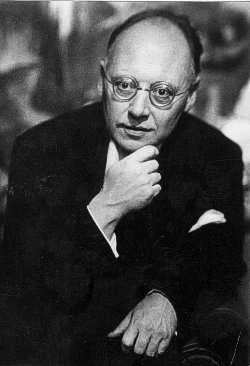In discussing Sorabji's variation sets, musicologist Simon John Abrahams writes, "Sorabji often follows the examples of Reger and Szymanowski in producing variations that maintain only the most tenuous of connections to the original theme". [16] A similar view was expressed by Sorabji himself, who wrote that the variations in Sequentia cyclica were "hardly to be called variations in the ordinary sense". [17] Some of them set the theme multiple times (e.g. variations 8, 14 and 18, where it is set seven, four and two times respectively), which has been cited as one of the reasons for the work's length. [18] [19]
Sections
Theme, "Largo. Legatissimo sempre e nello stile medioevale detto 'organum'": The opening presents the entire Dies irae chant, with its repetitions being skipped. The section is in F-sharp minor, with the theme appearing in plain chords and underpinned by the sonority C-sharp–F-sharp–C-sharp nearly throughout. [20]
Variation 1, "Vivace (spiccato assai)"
Variation 2, "Moderato"
Variation 3, "Legato, soave e liscio"
Variation 4, "Tranquillo e piano"
Variation 5, "Ardito, focosamente"
Variation 6, "Vivace e leggiero"
Variation 7, "L'istesso tempo"
Variation 8, "Tempo di valzer con molta fantasia, disinvoltura e eleganza"
Variation 9, "Capriccioso"
Variation 10, "Il tutto in una sonorità piena, dolce, morbida, calda e voluttuosa"
Variation 11, "Vivace e secco"
Variation 12, "Leggiero a capriccio"
Variation 13, "Aria: Con fantasia e dolcezza"
Variation 14, "Punta d'organo": This variation uses the note B as a pedal point throughout. Like other of Sorabji's similarly titled movements of a nocturnal character, it has been likened to "Le gibet", the second section of Ravel's Gaspard de la nuit . [21] Towards the end, Sorabji switches to a B-flat note in the bass, on which the movement concludes. [20]
Variation 15, "Ispanica"
Variation 16, "Marcia funebre"
Variation 17, "Soave e dolce"
Variation 18, "Duro, irato, energico"
Variation 19, "Quasi Debussy"
Variation 20, "Spiccato, leggiero"
Variation 21, "Legatissimo, dolce e soave"
Variation 22, "Passacaglia": The theme of the passacaglia is the shortened version of the Dies irae that has been prevalent in most works to use the melody (i.e. the first three phrases). It contains 100 variations, with the theme gradually rising from the bass to the soprano (with a voice change every 25 variations). Soft textures predominate in the later variations, with the theme returning to the bass towards the end. [22]
Variation 23, "Con brio"
Variation 24, "Oscuro, sordo"
Variation 25, "Sotto voce, scorrevole"
Variation 26, "Largamente pomposo e maestoso": This variation begins and ends with sections built largely on chordal textures, with a "Quasi Cadenza-fantasiata" being placed between them. [22]
Variation 27, "Fuga quintuplice a due, tre, quattro, cinque e sei voci ed a cinque soggetti": The final variation is a six-voice fugue on five subjects. It is broken down into five fugues (each on a single theme), going from two voices to six (one being added with each fugue). The fifth fugue culminates in a section titled "Le Strette: delle quinta parte della fuga", which is followed by a "Stretto maestrale". This passage is one of the few polyrhythmic fugal climaxes in Sorabji's output, along with that in his Piano Symphony No. 2 (1954). [23] The work concludes with a "Coda" ending in C minor, thus establishing a tritonal relationship with the F-sharp minor opening of the piece—a reference to the medieval notion of "diabolus in musica". [22]

